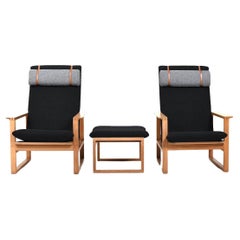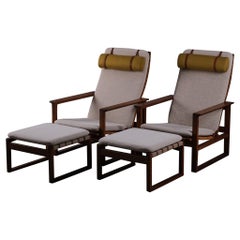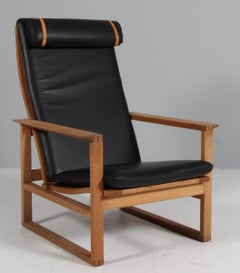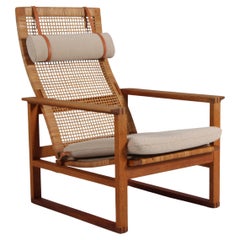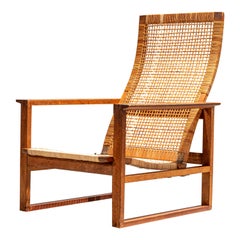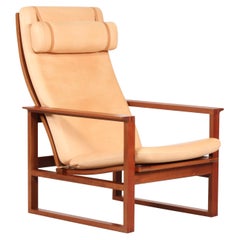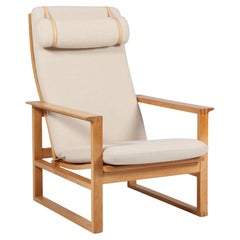Borge Mogensen Sled Chair
Mid-20th Century Danish Mid-Century Modern Lounge Chairs
Fabric, Oak
Mid-20th Century Danish Scandinavian Modern Lounge Chairs
Oak, Alpaca, Fabric
Vintage 1960s Danish Scandinavian Modern Lounge Chairs
Leather, Oak
Vintage 1960s Danish Scandinavian Modern Lounge Chairs
Wool, Cane, Oak
Vintage 1950s Danish Mid-Century Modern Lounge Chairs
Upholstery, Oak
Mid-20th Century Danish Scandinavian Modern Lounge Chairs
Oak
Vintage 1960s Danish Mid-Century Modern Lounge Chairs
Cane, Oak
Recent Sales
Vintage 1980s Danish Mid-Century Modern Wingback Chairs
Leather, Foam, Mahogany
Vintage 1960s Danish Scandinavian Modern Lounge Chairs
Leather, Oak
Vintage 1960s Danish Scandinavian Modern Lounge Chairs
Oak, Leather, Wool
Vintage 1960s Danish Scandinavian Modern Lounge Chairs
Leather, Oak
Vintage 1960s Danish Scandinavian Modern Lounge Chairs
Leather, Oak
Vintage 1960s Danish Scandinavian Modern Lounge Chairs
Mahogany, Leather
Vintage 1960s Danish Scandinavian Modern Lounge Chairs
Leather, Mahogany
Vintage 1960s Danish Scandinavian Modern Lounge Chairs
Leather, Oak
Vintage 1960s Danish Scandinavian Modern Lounge Chairs
Mahogany, Wool
Vintage 1960s Danish Scandinavian Modern Lounge Chairs
Leather, Mahogany
Vintage 1960s Danish Scandinavian Modern Lounge Chairs
Leather, Mahogany
Vintage 1960s Danish Scandinavian Modern Lounge Chairs
Oak, Wool
Vintage 1960s Danish Scandinavian Modern Lounge Chairs
Mahogany, Wool
Vintage 1960s Danish Scandinavian Modern Lounge Chairs
Leather, Oak
Vintage 1960s Danish Scandinavian Modern Lounge Chairs
Leather, Oak
Vintage 1960s Danish Scandinavian Modern Lounge Chairs
Wool, Mahogany
Mid-20th Century Danish Scandinavian Modern Lounge Chairs
Fabric, Rattan, Oak
Mid-20th Century Danish Scandinavian Modern Lounge Chairs
Wool, Oak
Vintage 1960s Danish Scandinavian Modern Lounge Chairs
Cane, Oak
Vintage 1960s Danish Scandinavian Modern Lounge Chairs
Wool, Cane, Oak
Vintage 1960s Danish Scandinavian Modern Lounge Chairs
Cane, Oak, Wool
Vintage 1950s Danish Mid-Century Modern Lounge Chairs
Oak
Mid-20th Century Danish Scandinavian Modern Lounge Chairs
Oak, Wool
Vintage 1960s Danish Scandinavian Modern Lounge Chairs
Cane, Oak
Vintage 1960s Danish Scandinavian Modern Lounge Chairs
Oak
Vintage 1960s Danish Scandinavian Modern Lounge Chairs
Oak
Mid-20th Century Danish Mid-Century Modern Lounge Chairs
Oak
Mid-20th Century Danish Scandinavian Modern Lounge Chairs
Oak
Vintage 1960s Danish Scandinavian Modern Lounge Chairs
Cane, Oak, Bouclé
Vintage 1960s Danish Scandinavian Modern Lounge Chairs
Cane, Oak
Mid-20th Century Danish Scandinavian Modern Lounge Chairs
Oak
Mid-20th Century Danish Scandinavian Modern Armchairs
Bouclé, Wood
Vintage 1960s Danish Mid-Century Modern Lounge Chairs
Leather, Oak
Mid-20th Century Danish Scandinavian Modern Armchairs
Oak, Wool
Vintage 1950s Danish Lounge Chairs
Oak, Linen, Leather
Mid-20th Century Danish Mid-Century Modern Armchairs
Fabric, Oak
Mid-20th Century Danish Mid-Century Modern Armchairs
Fabric, Oak
Mid-20th Century Danish Mid-Century Modern Armchairs
Fabric, Oak
Mid-20th Century Danish Mid-Century Modern Armchairs
Fabric, Oak
Mid-20th Century Danish Chairs
Wood
Mid-20th Century Danish Mid-Century Modern Armchairs
Fabric, Oak
Mid-20th Century Danish Mid-Century Modern Armchairs
Fabric, Oak
Mid-20th Century Danish Mid-Century Modern Armchairs
Fabric, Oak
Mid-20th Century Danish Mid-Century Modern Armchairs
Fabric, Cane, Oak
Mid-20th Century Danish Mid-Century Modern Armchairs
Fabric, Oak
Mid-20th Century Danish Mid-Century Modern Armchairs
Fabric, Cane, Oak
Mid-20th Century Danish Mid-Century Modern Armchairs
Fabric, Oak
Mid-20th Century Danish Mid-Century Modern Armchairs
Fabric, Oak
Mid-20th Century Danish Mid-Century Modern Armchairs
Fabric, Oak, Cane
Mid-20th Century Danish Mid-Century Modern Lounge Chairs
Cane, Oak
Mid-20th Century Danish Scandinavian Modern Side Chairs
Cane, Oak
Vintage 1950s Danish Scandinavian Modern Lounge Chairs
Brass
Vintage 1960s Danish Scandinavian Modern Lounge Chairs
Cane, Oak
Vintage 1960s Danish Scandinavian Modern Lounge Chairs
Oak
Vintage 1960s Danish Mid-Century Modern Lounge Chairs
Leather, Wool, Oak, Cane
Vintage 1960s Danish Scandinavian Modern Lounge Chairs
Cane, Oak
Vintage 1960s Danish Scandinavian Modern Lounge Chairs
Cane, Oak
Mid-20th Century Danish Mid-Century Modern Armchairs
Fabric, Oak
People Also Browsed
Vintage 1950s Scandinavian Scandinavian Modern Lounge Chairs
Leather, Birch
2010s South African Minimalist Pedestals
Hardwood
2010s Austrian Art Deco Chandeliers and Pendants
Brass
21st Century and Contemporary German Mid-Century Modern Chandeliers and ...
Metal, Iron
Vintage 1970s European Lounge Chairs
Leather, Walnut
Vintage 1950s Italian Mid-Century Modern Wall Mirrors
Mirror, Teak
Vintage 1950s Italian Mid-Century Modern Dry Bars
Brass
2010s Italian Side Tables
Onyx
Vintage 1940s Danish Scandinavian Modern Sofas
Fabric, Oak
2010s British Mid-Century Modern Wall Mirrors
Brass, Bronze
Vintage 1950s Italian Mid-Century Modern Shelves and Wall Cabinets
Brass, Steel
Vintage 1970s Italian Post-Modern Dining Room Tables
Oak
Early 2000s Unknown Art Deco Club Chairs
Steel, Chrome
Vintage 1960s French Mid-Century Modern Lounge Chairs
Fabric, Oak
Vintage 1950s American Mid-Century Modern Sofas
Fabric, Walnut
2010s French Modern Coffee and Cocktail Tables
Stone, Steel
Borge Mogensen Sled Chair For Sale on 1stDibs
How Much is a Borge Mogensen Sled Chair?
Børge Mogensen for sale on 1stDibs
Among the great mid-20th century Danish furniture designers, Børge Mogensen distinguished himself with his faith to traditional values of craftsmanship and honesty of materials.
While peers such as Hans Wegner, Finn Juhl and Arne Jacobsen designed some of the most striking and now iconic furnishings of the era, Mogensen focused on making chairs, sofas and other pieces that were simple, durable and comfortable — and in the long run perhaps more useful and better loved.
Mogensen studied under and later worked for Kaare Klint, a master cabinetmaker whose chief tenets were quality of construction and simplicity of line. Klint was a classicist, who believed that furniture forms should evolve from those of historical models. So, too, in his way was Mogensen, as two of his best-known earlier pieces attest.
His 1945 Spokeback sofa, with hinged arms that can be lowered to facilitate lounging, is a reinterpretation of the venerable Knole settee. With the oval silhouette of its plywood backrest and waterdrop-shaped cutouts, Mogensen’s Shell chair, designed in 1949, can be seen as a novel take on early 19th-century Empire side chairs.
Yet Mogensen shared the aesthetical sensibilities of his most forward-looking colleagues. His cabinets deploy the same spare geometries and lushly figured woods as those of Ludwig Mies van der Rohe and his disciple Florence Knoll, the chief difference being that Mies and Knoll used chrome steel for the frames and legs of their pieces. The brawny oak frames and slung leather seats and backrests of Mogensen’s Hunting chair (1950) and Spanish chair (1958) display the same hefty construction and appreciation of natural materials seen in the work of Charlotte Perriand and Sergio Rodrigues.
Mogensen designed for function more than sculptural effect. While his chairs may not be the first pieces in a décor to draw the eye, they are often the first to draw in those looking for a comfortable seat.
Find vintage Børge Mogensen dining tables, bookcases and other Scandinavian modern furniture for sale on 1stDibs.
Finding the Right Lounge-chairs for You
While this specific seating is known to all for its comfort and familiar form, the history of how your favorite antique or vintage lounge chair came to be is slightly more ambiguous.
Although there are rare armchairs dating back as far as the 17th century, some believe that the origins of the first official “lounge chair” are tied to Hungarian modernist designer-architect Marcel Breuer. Sure, Breuer wasn’t exactly reinventing the wheel when he introduced the Wassily lounge chair in 1925, but his seat was indeed revolutionary for its integration of bent tubular steel.
Officially, a lounge chair is simply defined as a “comfortable armchair,” which allows for the shape and material of the furnishings to be extremely diverse. Whether or not chaise longues make the cut for this category is a matter of frequent debate.
The Eames lounge chair, on the other hand, has come to define somewhat of a universal perception of what a lounge chair can be. Introduced in 1956, the Eames lounger (and its partner in cozy, the ottoman) quickly became staples in television shows, prestigious office buildings and sumptuous living rooms. Venerable American mid-century modern designers Charles and Ray Eames intended for it to be the peak of luxury, which they knew meant taking furniture to the next level of style and comfort. Their chair inspired many modern interpretations of the lounge — as well as numerous copies.
On 1stDibs, find a broad range of unique lounge chairs that includes everything from antique Victorian-era seating to vintage mid-century modern lounge chairs by craftspersons such as Hans Wegner to contemporary choices from today’s innovative designers.
